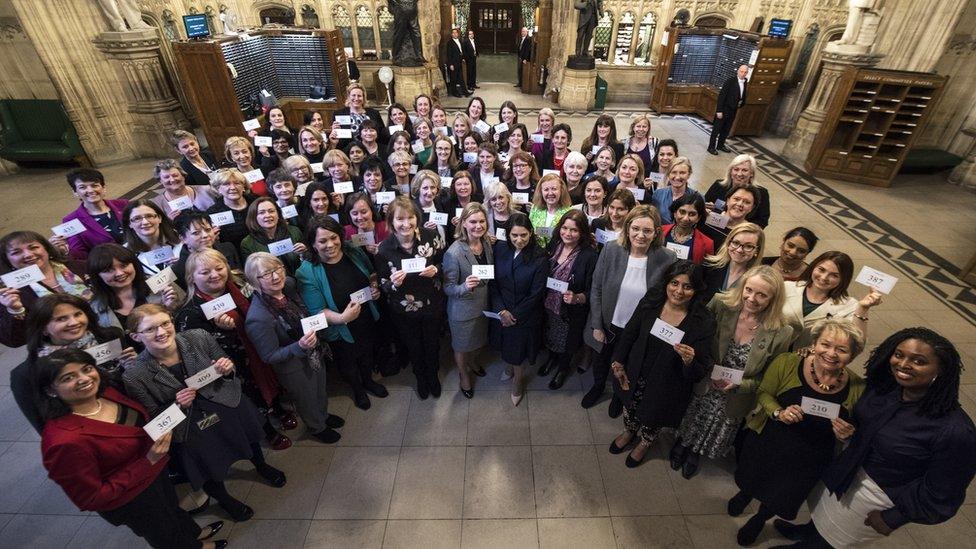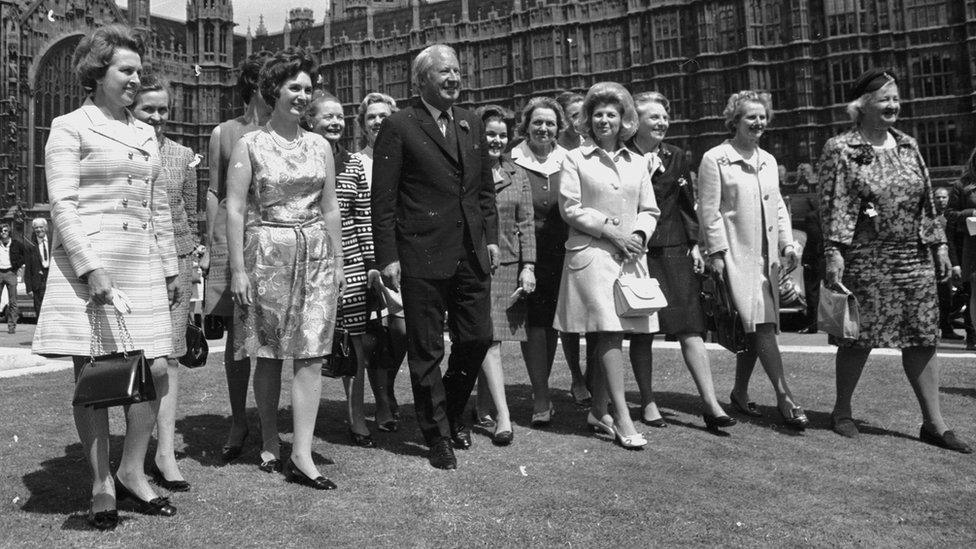General election 2019: Who has selected the most women as candidates?
- Published

A total of 208 women MPs were elected in the last election
With another election just over a month away, parties are busy selecting their candidates for seats up and down the country.
Most sides have made pledges to make their candidates more representative, including bringing more women into the race.
However, with the deadline for selections less than a week away on 14 November, the parties' record in selecting women is mixed - with Labour picking more women, while the Conservatives choose more men.
For many decades after women were first legally allowed to stand for election, female MPs made up less than 5% of the total.
This reached double digits for the first time under Margaret Thatcher in 1987, but shot up to 18% after Tony Blair's 1997 landslide, with 120 women elected.

Edward Heath alongside his female MPs in 1970
One in three MPs in the 2017 vote were women - 208 in total, up from 191 in 2015.
But there were significant variation between parties, with 45% of Labour MPs being women compared with just 21% for the Conservatives.
Since the last general election, Parliament has seen five by-elections after two women and three men resigned from Parliament.
But all five winning candidates were female - bringing the total in the House to 211.
The next election
Each political party has a different process for selecting or adopting candidates.
But preliminary research by the BBC suggests the parties have had varying success in selecting sufficient female candidates to reflect the population of the country.
So far, the Conservatives have selected proportionally fewer women candidates in the seats they are most likely to win than the other parties, while Labour has selected the most women.
The pattern holds both in seats where MPs are retiring and in target seats - the constituencies that require the smallest swings to change hands.
There are still some seats where the candidates haven't yet been chosen, but the parties have completed the selection process in most of the top targets.
Retirement seats
So far, 72 MPs have said publicly they will not stand at the forthcoming election and 20 are women - approximately the proportion of the total number of female MPs.
Traditionally, political parties have attempted to fill vacancies created through retiring MPs by shoehorning in their favourite sons. But times have changed.
Politicians understand by encouraging the adoption of women candidates in these "retirement" seats - many of whom will inherit strong majorities and are seen as relatively safe - the parties can boost their number of female MPs and edge towards gender balance.
The selections in such prized "safe" seats remains ongoing, but at the time of writing, significantly more female candidates had been selected than the number of incumbent female MPs who are leaving the Commons.
All this means that if the swingometer remained frozen on election night and no seats changed hands there would be 16 additional women MPs.
Target seats
The BBC has also looked at the top 50 target seats - listed by swing required - for the three main UK parties, and the 24 target seats for the SNP in Scotland.
Once again, the selections process is still ongoing, but from the data analysed so far, there are similar variations:
Whatever the outcome of the election though, don't expect equal numbers of men and women in the next Parliament.